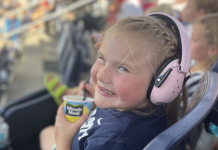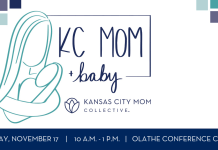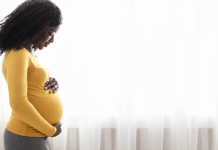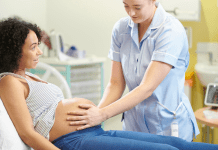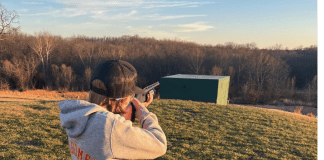Laura’s desire to be a mother didn’t start when she got married. It started when she was a toddler, feeding bottles of milk to her dolls before rocking them to sleep.
That little girl grew up, got married, and finished graduate school. At 27, she was ready to get pregnant. She and her husband Todd tried for a year. Then 6 months more. It didn’t happen.
“At that point, all my friends were popping out kids like nobody’s business,” Laura says.
The first visit to an infertility clinic started with 20 pages of paperwork, blood tests, some more invasive tests and ended with a diagnosis of Polycystic Ovarian Syndrome.
Laura was ready to do everything medically available to have the babies she’d been waiting for more than 2 decades to hold. Todd, though, was anxious about too much medical intervention.
So began the appointments with a nutritionist. Then acupuncture. Daily trips to the gym. Laura began taking drugs to regulate her hormones. The pills made her throw up, but not because she was pregnant – rather, because her body wouldn’t cooperate.
After 7 more months, there was no baby. More drugs, timed sex, charting temperatures, ultrasounds to track ovulation, shots to stimulate eggs dropping from the ovaries. Every possible avenue was explored before moving to IUIs.
Those didn’t work, either.
“I was definitely thinking it would never happen,” Laura remembers. “The tunnel was getting narrow, and my choices were becoming less and less. The tunnel was shutting in on me and IVF was one of the only things left.
“I didn’t care. I wanted to get pregnant. I didn’t care how I got there.”
As a baby seemed far away, if not impossible, Todd began to feel the pain Laura had been feeling from that first infertility appointment. The birth announcements for first babies came. Then second babies, sometimes even third babies. Todd lovingly hid them from his wife – a stack of dozens of cards she found when moving to Kansas City 2 years ago.
“When you’re infertile, you feel like you’re disabled. You want to be a mom but you can’t do it. Our stuff isn’t working.”
Todd felt her pain, but he wasn’t the one throwing up after each medication dose. He didn’t see the monthly blood and feel the pinching cramps, another sign of failure. What he could do, though, was help Laura cope.
Enter Super Happy Fun Day (SHFD).
When Laura got her period, she’d text Todd who would mark SHFD on the calendar. Sometimes it was a massage, a chick flick or a fancy dinner. It didn’t heal the pain, but it helped turn a sad day into something a little less painful.
Infertility can take its toll on marriages, often leading to divorce. There were times when Laura’s openness and Todd’s support just weren’t enough to overcome the pain.
“At a hard point in our marriage, Todd said, ‘you’re having an affair with this baby we don’t have. Will I be enough if we don’t have this baby you want so badly?’” Laura recalls. “It rocked my world. Marriage was a huge part of my life, and infertility only a small part. From that point on, I tried hard to make marriage my number one priority. I would not lose my marriage over this.”
In June 2011, the third IUI failed and the first round of IVF began in September 2011. IVF begins with drugs to stimulate egg growth followed by surgical egg retrieval.
“People say IVF so freely but they have no idea what it entails,” Laura says. “You have surgery where they poke holes in your ovaries to suck out your eggs. You get shots several times a day, ultrasounds every other day and frequent blood work to check hormone levels. I’d be out running and have to stop and give myself a shot.”
Once the retrieved eggs are fertilized and embryos have time to grow, they are transferred back into the uterus with guidance from an ultrasound.
“You have 6 people in the room with you, and you’re getting pregnant.”
Then, as many women are familiar with, the two-week wait begins. For those two weeks, Todd laid his head against Laura’s belly and kissed his children goodnight. Laura took her pre-natal vitamins, ate healthy, and avoided caffeine. When IVF doesn’t work, the heavy bleeding begins … just as it did for Laura in October, then again in December when the second IVF failed.
She began to avoid the baby aisle at Target, timing her shopping trips to avoid the moms and kids that seemed to populate every aisle during the daylight hours. She deleted her Facebook account to avoid the happy pictures of pregnant bellies and newborn babies. She spent many nights bawling in the corner of coffee shops, journaling through her pain, crying out to God.
I feel like you are distant and silent. It makes me wonder if you’re a loving God at all. I’ve never felt such doubt that you are there, that you are good. I am so deeply sad to the point I can’t stop crying. I am so angry at you. Deeply longing for a child I may never have. What if I never have a child, what then? Maybe I am not supposed to be a mother … I feel like I’ve always tried to do what’s right. I think I’m losing the faith.
Todd wanted to know when they would give up. For Laura, it would be when the pain of stopping was less than the pain of continuing to go on.
She wasn’t there yet.
That spring, the third IVF failed. Again.
In the spring, a bird started building a nest in the wreath on our front door. She was busy preparing; she laid her eggs, sat on them for days, then one day she was gone and so were the eggs. Where did they go? Did they die?
I feel like that ready nest, all prepared, the embryos there and then NOTHING. Who knows what happened, what went wrong? All we know is there is a nest and it’s really nice and warm and there were eggs and then BAM – nothing. I want my babies in my uterus to stay there and grow until it’s time to be born and hatch.
Through all the pain, Laura and Todd were part of a community in North Carolina that held them up. Each year, Mother’s Day cards lined their mantle with reminders that motherhood begins much before a woman holds a baby in her arms. Friends offered to be surrogates should the IVFs continue to fail. People said all the wrong things, but what mattered was that they tried to bring words of comfort to their hurting hearts.
“I had a one thousand pound weight on my shoulders. But, I was only carrying 200 pounds. The rest was carried by loved ones who each carried 20 or 30 pounds of the load.”
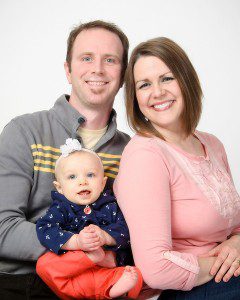
On September 22, 2012, fresh embryos were transferred to begin IVF – round four. As they waited for a miracle, Todd accepted a job as a pastor at Kansas City’s Resurrection Downtown. Laura would soon be leaving her fertility clinic, her friends, her church – the only support system she had ever known.
On October 5, Laura’s phone was on, ringer and vibration up to the max. When the call came, she listened as the nurse exclaimed, “sweetie, you’re pregnant!”
That weekend was filled with pizza parties, balloons, a celebration service at church and shopping for baby and maternity clothes – an errand Laura had been waiting 55 months to run.
“We hugged and cried,” Laura remembers with tears in her eyes. “The joy. I had never felt that kind of exuberance. I felt like I could fly a plane with that joy.
“It was just surreal. And it still is.”
On June 9, 2013, Monika Marie entered the world – Monika after a trusted friend who had held Laura’s hand on her motherhood journey, and Marie, after another friend – a name which means “wished-for child.”
One day, Laura will explain to her daughter the road she walked and how she ended up with a miracle child. Still, the pain is real – and as she recalls the years of hope and failure, tears still blur her eyes.
“It’s the kind of pain that hollows you out and makes you a better person.”
Editor’s note: This post is the second in our series on issues surrounding infertility. For more posts in this series, click here.
Like what you’ve read today?
Click here for great daily content delivered straight to your inbox!



